Standing still for mounting is a fundamental skill every horse should learn. When a horse fidgets, steps away, or becomes anxious during mounting, it can pose a serious safety risk to both rider and horse. Beyond safety, a horse that stands calmly reflects good training, mutual respect, and a strong foundation for future riding. In this comprehensive guide, we’ll cover effective techniques to help your horse master this essential skill—while also building trust and clear communication along the way.
Understanding Why Horses Move During Mounting
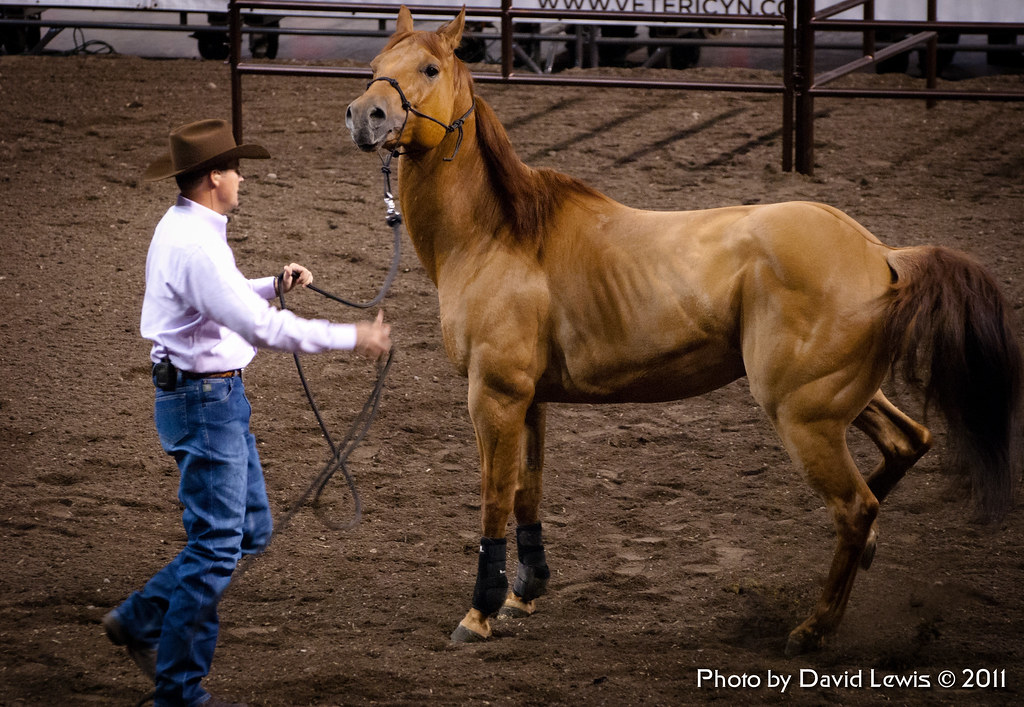
Horses don’t naturally stand still when something climbs onto their back—this behavior goes against their survival instincts as prey animals. When a horse moves during mounting, it’s often due to one of several reasons: physical discomfort from an ill-fitting saddle, anticipation of work or exercise, lack of proper training, or negative past experiences. Some horses also develop the habit of walking off immediately after mounting simply because they’ve been allowed to do so. Understanding these root causes allows you to address the actual issue rather than just the symptom, leading to more effective and compassionate training.
Preparing Your Horse Mentally for Training

Before beginning any mounting training, ensure your horse is in a calm, receptive state of mind. Start in a familiar environment with minimal distractions, such as a quiet arena or round pen. Spend time grooming and handling your horse to build a connection and help them relax. Look for signs of anxiety or tension, such as tail swishing, pinned ears, or a raised head, and address these before proceeding. Mental preparation is essential, as a mentally resistant horse won’t effectively learn the standing skill, regardless of physical cues or corrections during training.
Establishing Ground Manners First
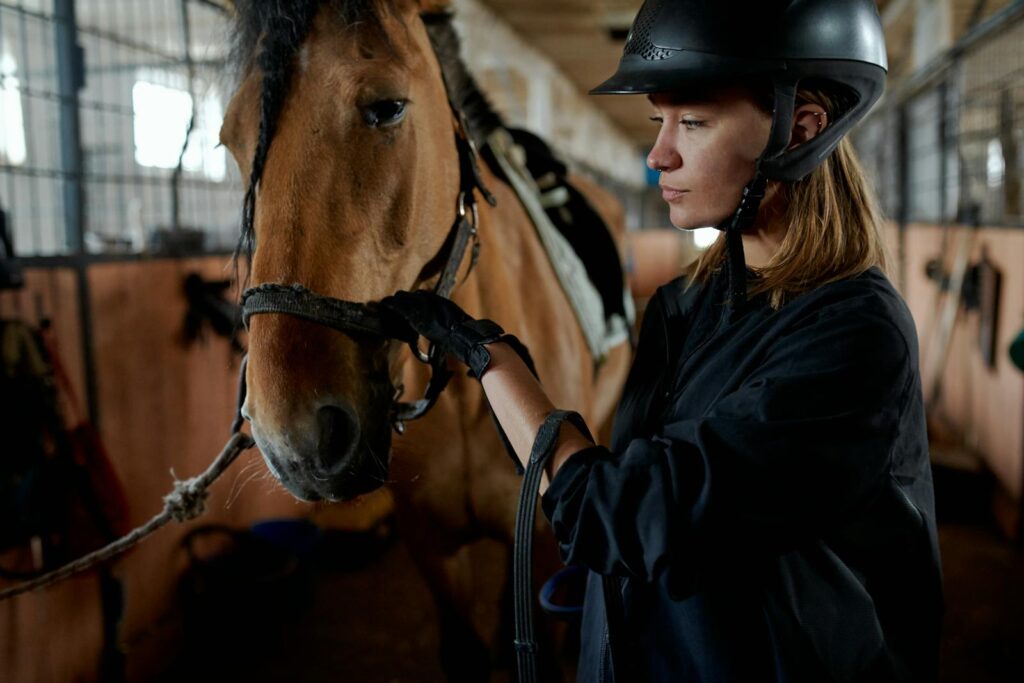
Solid ground manners are the foundation for successful mounting training. Your horse should respect your personal space, respond to basic commands, and stand still when asked before you attempt mounted work. Practice having your horse stand quietly on a loose lead rope for progressively longer periods, rewarding patience with praise or treats. Teach the verbal command “stand” or “whoa” during these ground sessions, using consistent cues that you’ll later transfer to mounted work. Remember, skills developed on the ground directly translate to behaviors under saddle, making this preparatory work essential, not optional.
Creating a Safe Training Environment

Selecting the right environment significantly impacts training success. Begin in an enclosed area with good footing and minimal distractions. A mounting block positioned against a fence or wall can be helpful, as it limits the directions in which your horse can move. Ensure you have enough space to work safely, but not so much that the horse feels overwhelmed. Remove any hazards that might cause injury or startle your horse during training, such as loose equipment, flapping objects, or unexpected noises. The ideal training environment should feel safe and consistent for both you and your horse, allowing you to focus on the task without external stressors.
Teaching the “Stand” Command
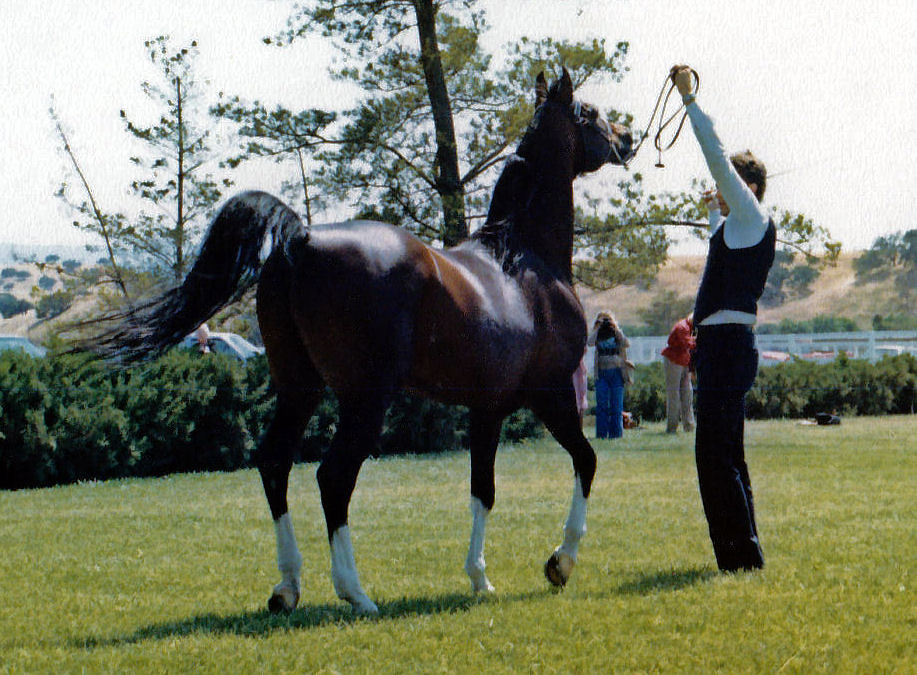
The verbal “stand” command establishes clear communication with your horse. Start by holding your horse in position and calmly saying “stand” while keeping them stationary for a few seconds. When the horse remains still, immediately reward them with praise, a treat, or a rub on the neck. Gradually increase the standing duration before offering the reward. If the horse moves, gently reposition them and repeat the command—without punishment or frustration. Practice this command several times a day in different situations—during grooming, tacking up, or general handling—to reinforce that “stand” means remain still, no matter the context.
Using Positive Reinforcement Effectively
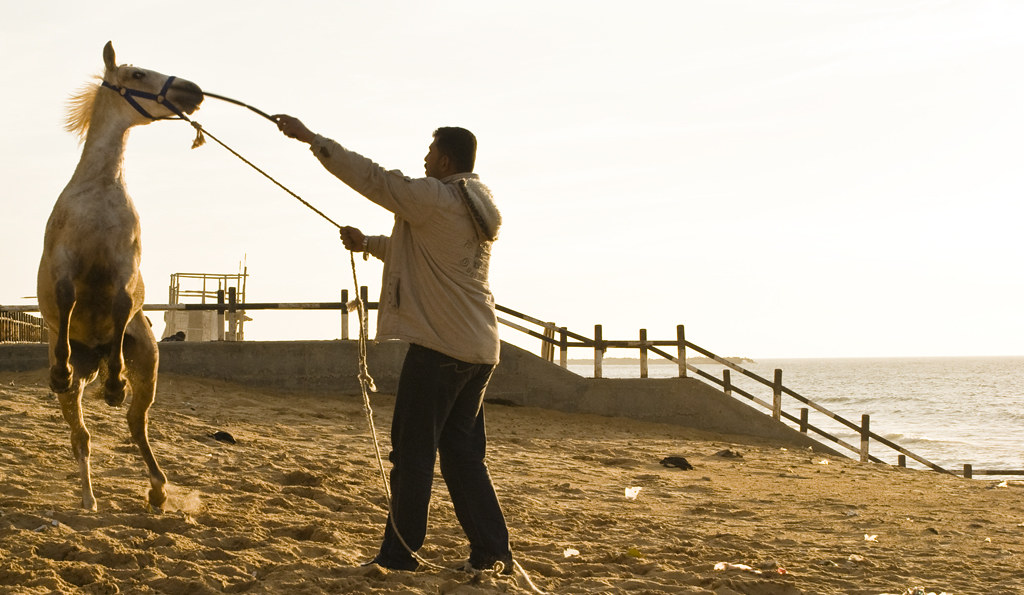
Positive reinforcement builds a willing partner rather than a merely compliant subject. When your horse stands still—even briefly—immediately reward the behavior with something they value: a treat, release of pressure, verbal praise, or a favorite scratch. Timing is essential—the reward must follow within seconds to help the horse connect it to the behavior. Be consistent with reinforcement, gradually increasing the duration your horse must stand before earning a reward. Some trainers use clicker training to mark the exact moment of success, offering a clear signal that helps the horse understand precisely which action earned the reward.
The Mounting Block Advantage

A mounting block offers several advantages when teaching a horse to stand still. It reduces strain on the horse’s back by minimizing the downward pull on one side of the saddle during mounting, making the process more comfortable and increasing the horse’s willingness to remain still. It also helps train the horse to position themselves accurately next to an object—building focus and precision. Start by leading your horse to the mounting block, asking them to stand parallel, and rewarding correct positioning. Practice stepping onto the block, touching the saddle, and stepping down repeatedly before mounting. This gradual, low-pressure approach desensitizes the horse to the mounting routine while reinforcing the stand command.
The Pre-Mounting Routine

Establishing a consistent pre-mounting routine creates predictability that helps calm anxious horses. Begin by standing alongside your horse’s shoulder, facing forward, and holding both reins with gentle contact—enough to guide, not restrict. Take a deep breath; horses often mirror their handler’s breathing, which can promote relaxation. Give the verbal cue “stand” before moving toward the stirrup. If the horse remains still as you apply weight, immediately release the pressure and offer praise, then step down. Repeat this process several times before mounting, making the routine itself rewarding rather than focusing solely on the end goal. A reliable pre-mounting sequence builds confidence by eliminating surprises and giving the horse time to mentally prepare.
Mounting Practice Progression

Systematic progression builds confidence without overwhelming your horse. Start by simply placing weight in the stirrup for a moment, then removing it and immediately praising the horse for standing still. Next, try lightly bouncing in the stirrup while reinforcing the stand command. Progress to raising yourself halfway up, pausing briefly, then lowering back down. Eventually, swing your leg over—but dismount right away if the horse remains still. Practice each step repeatedly until the horse shows no signs of anxiety or movement before advancing. This methodical approach prevents the reinforcement of unwanted behavior and lays a strong foundation for successful mounting.
Addressing Common Resistance Behaviors

Horses often show different forms of resistance when learning to stand still for mounting. A common issue is sidestepping away from the rider, which can be managed by positioning the horse alongside a wall or fence during early training. Some horses anticipate work and walk forward as soon as the rider mounts; you can counter this by occasionally mounting and dismounting without riding, or by mounting and asking the horse to stand quietly for varying amounts of time before moving off. Horses that back up during mounting may benefit from groundwork that reinforces forward movement and standing calmly—never allowing backing to become a successful way to avoid the task. With each resistance behavior, it’s important to identify the root cause and work to gently desensitize the horse while reinforcing stillness.
Using Helper Assistance Safely
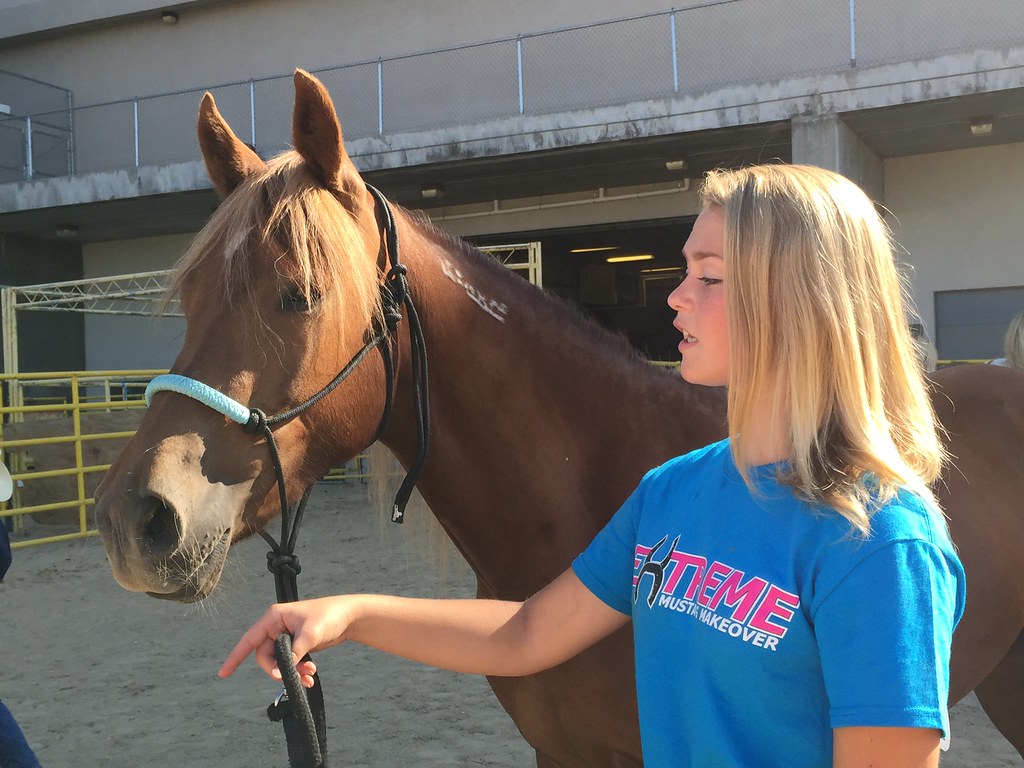
A ground assistant can be invaluable when teaching mounting skills, especially with young or nervous horses. Position your helper at the horse’s head, holding the lead rope or bridle without pulling or creating tension. The helper should stand on the same side as you’re mounting from, slightly angled to avoid the horse’s blind spot. Establish clear communication signals ahead of time, so the helper knows when to offer support and when to allow the horse to stand independently. Gradually reduce reliance on the helper by having them move further away as training progresses. Keep in mind that the goal is independent standing, so use assistance as a temporary aid rather than a permanent solution.
Addressing Physical Discomfort Issues
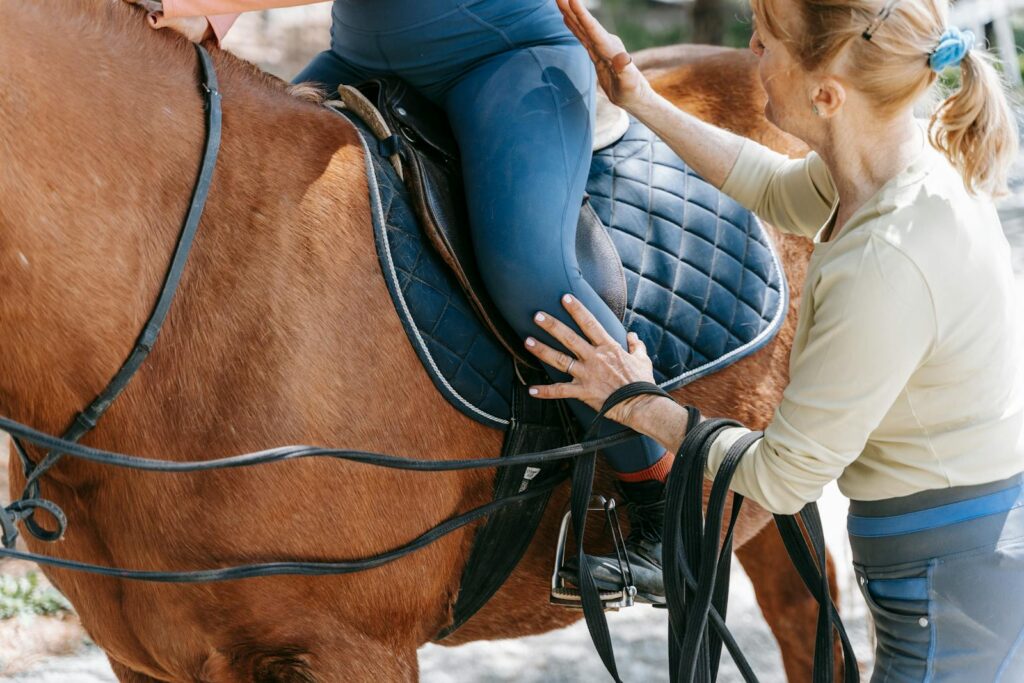
Physical pain or discomfort often underlies resistance to standing still for mounting. Have an experienced professional check your saddle fit to ensure it doesn’t pinch or create pressure points when weight is added. Examine your horse’s back for sensitive areas, and consider whether chiropractic or massage therapy might help resolve any physical issues. Pay attention to whether your mounting technique causes discomfort—some riders inadvertently bang the horse’s back or pull too hard on the saddle when mounting. If your horse consistently displays pain behaviors like pinned ears, a swishing tail, or a hollow back during mounting, consult with your veterinarian to rule out medical issues before continuing training.
Maintaining Consistency Across All Riders
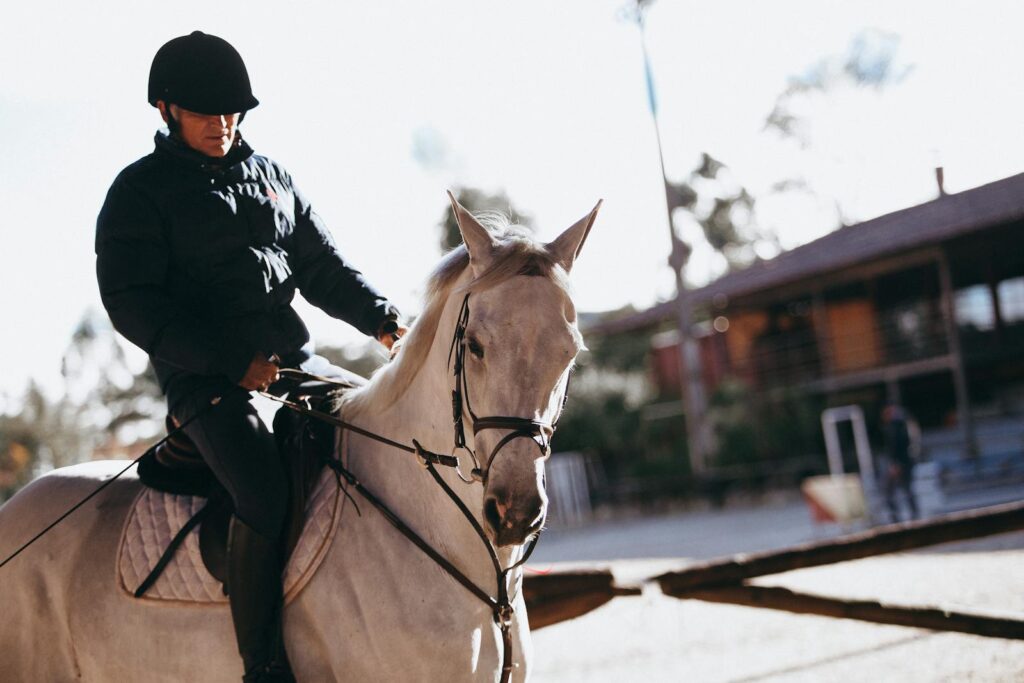
Horses quickly learn different rules for different riders if allowed, making consistency crucial for solid training. Establish clear mounting protocols that all handlers follow, regardless of the horse’s behavior or the rider’s experience level. Everyone who mounts should use the same verbal commands, pre-mounting routine, and require the same standard of stillness before moving off. This consistency extends to all environments—the horse should stand for mounting whether at home, at a competition, or on the trail. Document your training approach and share it with anyone who might handle your horse, explaining the importance of reinforcing rather than undermining the standing behavior.
Building Duration and Distractions

Once your horse reliably stands for basic mounting, gradually increase the challenge by extending the duration and adding distractions. Start by practicing mounting and sitting quietly for progressively longer periods—ten seconds, then thirty, then a minute—before asking the horse to move off. Slowly introduce minor distractions during the mounting process, such as another person walking nearby or a mild noise. Eventually, practice in different locations with varying levels of activity. This progressive training prepares your horse for real-world situations where standing still is valuable, such as mounting on a trail with others moving around or at a busy competition where focus is key.
Troubleshooting Persistent Problems
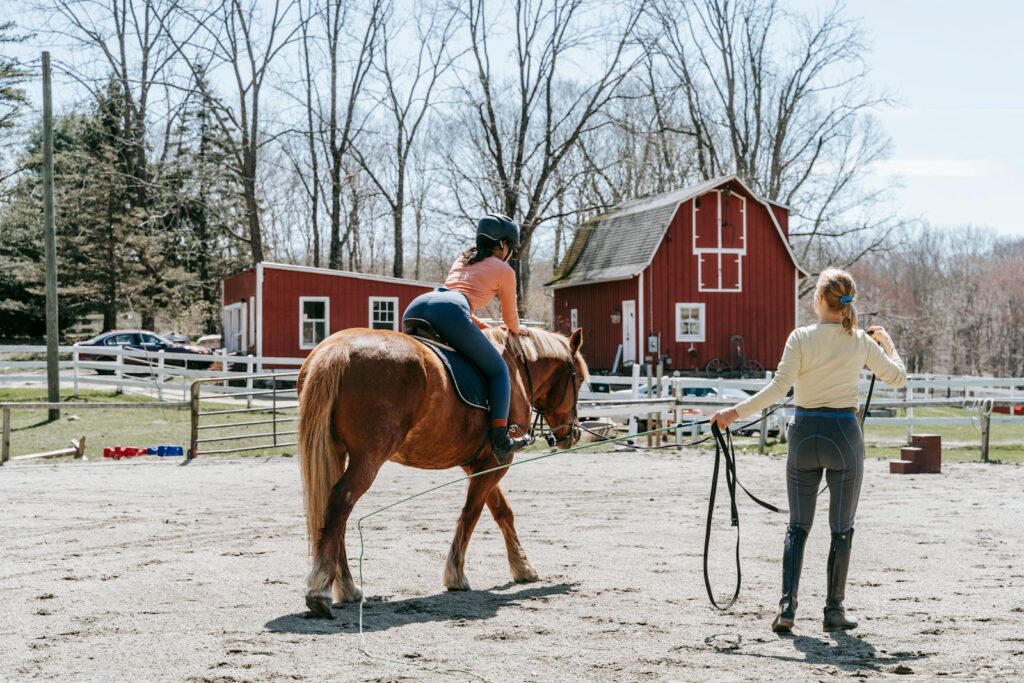
Some horses develop deep-seated habits that require specialized approaches. For horses with ingrained walking-off habits, consider having someone hold the opposite rein while mounting, offering a gentle reminder to stay stationary. Try mounting and immediately dismounting repeatedly without riding, breaking the horse’s association between mounting and immediate work. In particularly resistant cases, professional trainers often use a technique of mounting and dismounting from both sides, dozens of times in a session, making standing the easier option compared to constant movement. Remember that returning to earlier training steps is sometimes necessary—if complexity creates problems, simplify until success is achieved, then build gradually again.
Maintaining the Skill Long-Term

Standing for mounting requires ongoing reinforcement to stay reliable. Even with well-trained horses, periodically revisit the basics by rewarding standing behavior and occasionally practicing the mounting routine without actually riding afterward. Avoid developing counterproductive habits like immediately walking off after mounting or allowing the horse to fidget “just this once” when you’re in a hurry. Schedule regular “tune-up” sessions where you focus specifically on mounting behavior rather than riding goals. The investment in maintaining this fundamental skill pays off in safety and partnership throughout your horse’s career, preventing the gradual decline that often occurs with skills that aren’t consciously maintained.
Training a horse to stand quietly for mounting requires patience, consistency, and an understanding of equine psychology. By building this skill systematically from the ground up, addressing both mental and physical factors, and maintaining clear expectations, you create a safer, more enjoyable partnership with your horse. Remember, this training isn’t just about convenience—it establishes respect, communication, and trust, forming the foundation for all other riding activities. A horse that stands willingly for mounting demonstrates not just obedience but confidence in their rider and comfort in their role, ultimately leading to a more harmonious riding experience for both horse and rider.







